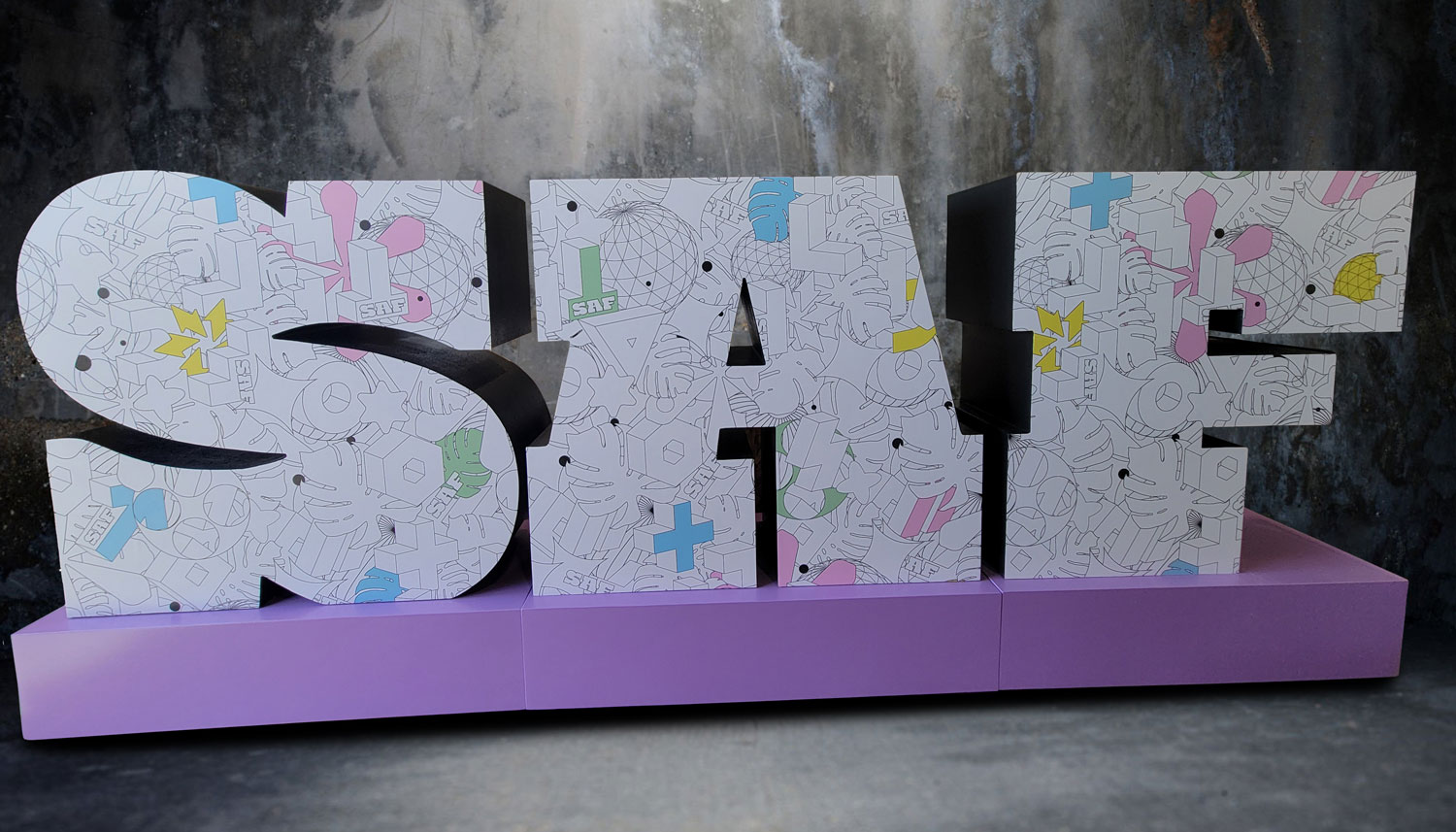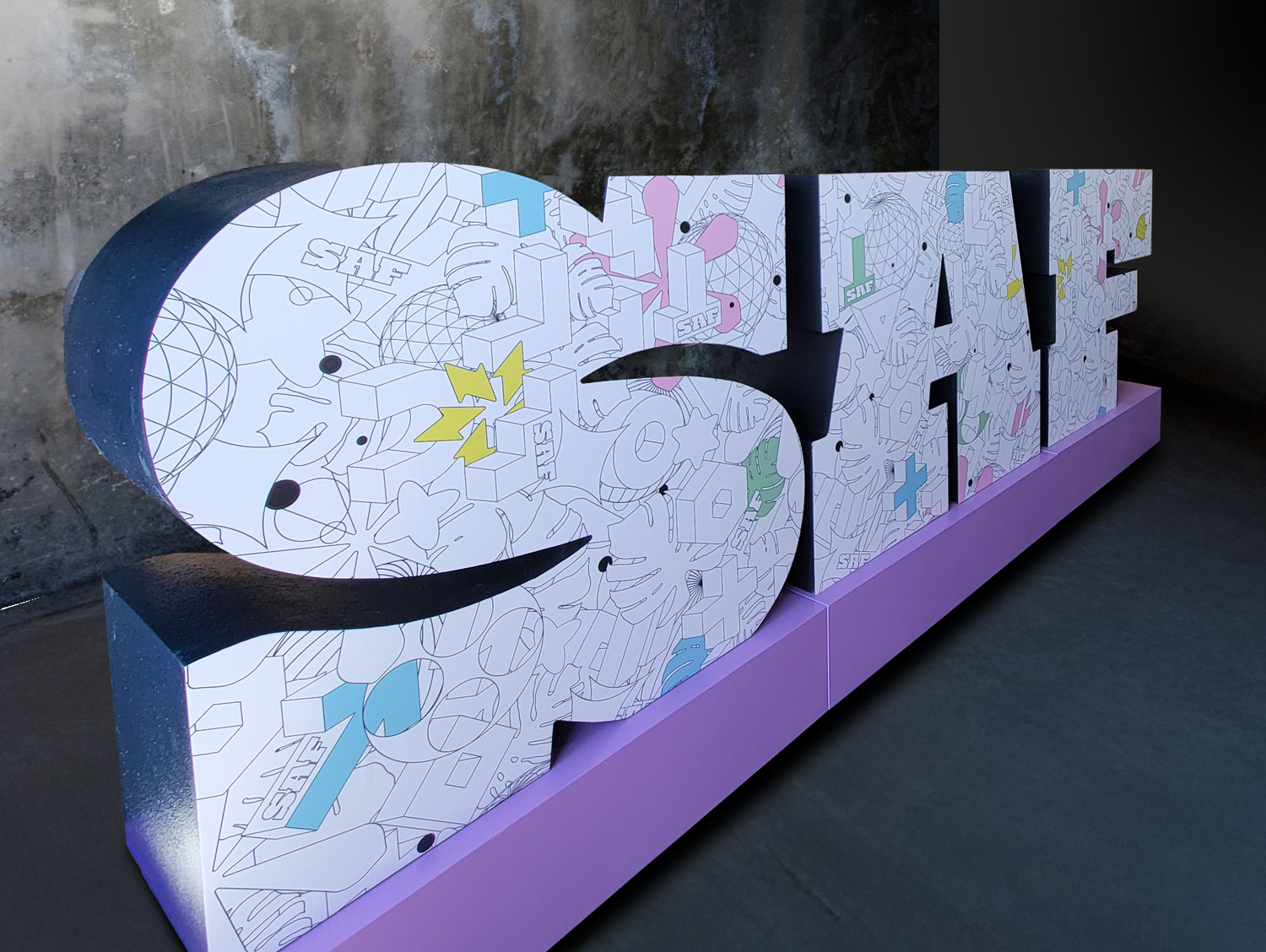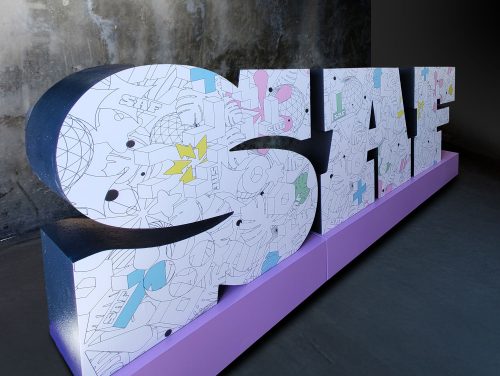Designer Large Letters
Designer Large Letters
We Build Custom Giant 3D Large Letters
Designer Large Letters: Elevating Spaces with Bold Typography and Artistry
In the realm of modern design, one trend that stands tall—literally and figuratively—is the use of designer large letters. These oversized, visually striking elements are transforming the way we approach space, branding, and public art. From corporate branding to events and urban landscapes, large letters are more than just a typographical choice; they are a fusion of art, design, and architecture that leaves a lasting impact. Whether they spell out a name, a slogan, or simply evoke emotion through form, designer large letters have become a vital tool in visual communication.
These monumental structures serve as both functional signage and decorative art, inviting interaction while conveying messages in a bold, undeniable way. But the beauty of designer large letters lies not just in their size or visibility, but in their craftsmanship, attention to detail, and the thought process that goes into creating them. This blog will explore how designer large letters are conceived, designed, and brought to life—and why they have become a symbol of modern design culture.

The Evolution of Large Letters in Design
Designer large letters have roots in typographic history. Typography has always played a crucial role in design, communication, and branding, but the rise of oversized, three-dimensional letters is a relatively modern phenomenon. The transition from two-dimensional type to physical structures was fueled by the desire to make typography not only readable but experiential. As cities grew and competition for attention increased, designers and architects began to realize the power of large letters as landmarks and identifiers.
What began as functional wayfinding or signage quickly evolved into something more artistic. Designers started experimenting with scale, form, materials, and placement, turning simple letters into eye-catching sculptures that enhanced public spaces or amplified brand messaging. This evolution paved the way for the trend we see today—designer large letters as bold statements, used across a variety of industries, from fashion and entertainment to urban planning and architecture.
The shift also reflects a deeper cultural trend: the fusion of art and utility. Designer large letters are no longer confined to billboards or storefronts; they are being integrated into the fabric of cities, events, and even homes, transforming spaces into interactive, engaging environments.
Crafting a Statement: The Design Process
The creation of designer large letters is a multi-layered process that blends art, architecture, and engineering. From concept to completion, each step is carefully planned to ensure that the final result is not just aesthetically pleasing, but structurally sound and capable of standing the test of time. This process often begins with a design brief that outlines the purpose of the letters—whether they are intended for branding, an event, a public art installation, or interior décor.
Once the purpose and message are defined, designers move on to the creative stage, where they explore typography, size, shape, and style. The choice of typeface is crucial, as it communicates much about the tone and intent of the installation. For example, a sleek, modern sans-serif font might be chosen for a high-tech brand installation, while a bold, retro-style typeface could be used to create a nostalgic or playful vibe. Typography is not just about readability; it’s about emotion, mood, and identity.
Beyond the typeface, the physical form of the letters comes into play. This involves deciding on the height, depth, and proportion of each letter, ensuring they are balanced and visually cohesive. The scale of the letters depends largely on their environment. Large outdoor installations often feature letters towering over 10 feet tall, while smaller indoor settings might use letters that are more modest in size but still impactful.

Material Matters: Choosing the Right Medium
One of the defining aspects of designer large letters is the choice of materials. The materials selected not only affect the appearance of the letters but also their durability, texture, and the overall vibe they convey. Each project may call for a different material depending on the setting, budget, and desired impact.
Metal: Steel, aluminum, and other metals are popular choices for outdoor installations due to their durability and modern aesthetic. Metal letters can be polished to a sleek shine, given a rustic patina for a vintage look, or powder-coated in vibrant colors to stand out in urban landscapes. Metal letters are often seen in corporate branding, where strength and professionalism are key themes.
Wood: For a more organic or rustic look, wood is a favorite. Wooden large letters are often used in interior design or events where a warmer, more natural feel is desired. They can be stained, painted, or left raw to show off the natural grain of the wood. Wood is especially popular for weddings, retail spaces, and restaurants where the goal is to create an inviting atmosphere.
Acrylic and Plastic: Lightweight and versatile, acrylic and plastic materials are commonly used for designer large letters that need to be easily transported or installed. These materials can be molded into nearly any shape and can be made translucent, opaque, or illuminated from within. Their flexibility makes them ideal for events, pop-ups, and exhibitions where temporary installations are needed.
Foam: Foam letters are lightweight, easy to move, and cost-effective, making them a popular choice for events and temporary installations. While not as durable as metal or wood, foam can be coated or painted to achieve a variety of looks, from sleek modern to fun and playful. Foam letters are commonly used at conferences, trade shows, and photo booths due to their portability and ease of setup.
Glass and Mirrors: For a luxury, high-end aesthetic, glass or mirrored letters make a bold statement. These materials are often used in fashion events, luxury hotels, and upscale retail stores to create a sense of sophistication and elegance. The reflective nature of mirrors adds an interactive element, as viewers see themselves in the letters, making the installation more personal and engaging.
Function Meets Form: The Role of Designer Large Letters in Branding
One of the most prominent uses of designer large letters is in branding. For businesses, the visual identity is paramount, and large letters offer a way to reinforce that identity in a bold, physical form. Companies use designer letters to create memorable signage that stands out in crowded urban areas, to anchor trade show booths, or as statement pieces in corporate lobbies. These letters become a visual shorthand for the brand, embodying its values, style, and message.
Take, for example, tech giants like Google or Facebook. Both companies have made extensive use of large letters at their headquarters and events, creating interactive installations where visitors and employees can take photos, leave messages, or simply marvel at the scale of the brand. These installations are not just decorative—they’re tools for engagement. People want to interact with these letters, to pose with them, to be a part of the brand’s story.
Another iconic example is the fashion industry, where designer large letters often spell out luxury brand names in department stores or at fashion shows. The oversized typography serves to elevate the brand’s presence, making it impossible to ignore. Fashion events are increasingly using large letters as photo backdrops, inviting attendees to take part in the brand experience by capturing their interactions with the letters and sharing them on social media.

Public Art and Urban Landmarks
Designer large letters have also made their mark in public art. Cities around the world are increasingly embracing large-scale typography as a way to beautify public spaces, create landmarks, and foster a sense of community. These installations often spell out the name of the city or a significant word that represents the area’s culture or history.
For example, the “I Amsterdam” letters became a globally recognized icon, drawing tourists and locals alike to snap photos and share their pride for the city. This simple installation of large letters helped to brand Amsterdam as a vibrant, modern city while offering an interactive experience that visitors could take part in.
Similarly, in cities like Los Angeles or Toronto, large letters spelling out the city’s name have become tourist attractions in their own right. These letters are more than just signs—they’re places where people gather, take pictures, and share their experiences online. They serve as meeting points, conversation starters, and sources of civic pride.
Designer Large Letters in Events and Experiential Design
In the world of experiential marketing and events, designer large letters are a powerful tool for creating immersive brand experiences. Whether it’s a product launch, a corporate event, or a festival, these letters can serve as both functional signage and interactive art.
For events, large letters are often used as centerpieces or backdrops for photo ops. Attendees love to pose with them, making the event more memorable and shareable. In fact, many event planners now design spaces with social media in mind, knowing that large letters will be a magnet for photos and posts. The letters themselves often become synonymous with the event, reinforcing branding and creating a lasting impression on attendees.
At music festivals, sports events, and trade shows, large letters can spell out the name of the event, the host city, or even sponsor brands. These letters create a sense of place and make the event feel larger than life. When strategically placed at entrances or in key locations, they draw people in and provide a visual focal point that ties the event together.
Interactive Elements: Lighting, Movement, and Technology
The next frontier for designer large letters lies in the integration of interactive elements like lighting, movement, and technology. By incorporating LEDs, motion sensors, or augmented reality, designers are pushing the boundaries of what these letters can do.
Lighting is one of the most popular ways to enhance designer large letters. By backlighting the letters or embedding LEDs, the letters can change color, glow in the dark, or even pulse to the beat of music at an event. This adds a dynamic, eye-catching element that enhances the experience and draws even more attention.
Movement and technology can take the interaction even further. Letters that move or change shape depending on the angle from which they are viewed create a sense of wonder and engagement. In some cases, designers are using projection mapping to animate letters, turning them into living, breathing sculptures that interact with their surroundings
